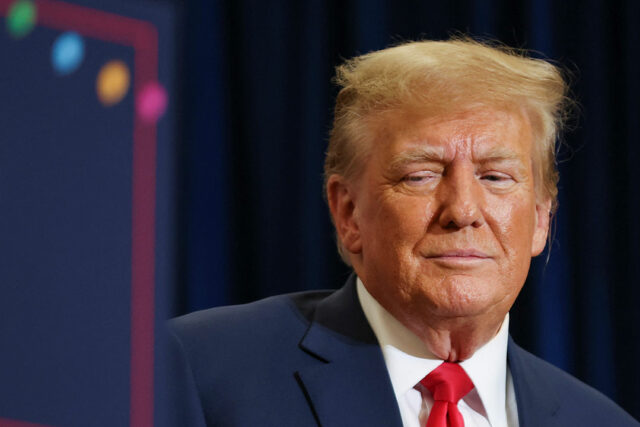BELOW-TARGET June inflation gives the Bangko Sentral ng Pilipinas (BSP) room to continue its easing cycle this year, but unexpected price shocks and the US Federal Reserve’s rate path could affect this outlook.
Finance Secretary and Monetary Board member Ralph G. Recto said in a statement on Friday that the lower-than-expected June inflation print “provides more room for the BSP to further cut policy interest rates to help us further boost the spending power of Filipinos, drive in more investments, and grow the economy, especially amid rising global uncertainties.”
“With the outlook for inflation remaining favorable and recent guidance from the BSP leaning dovish, another rate cut in the coming months is possible,” Bank of the Philippine Islands Lead Economist Emilio S. Neri, Jr. said in a note.
Inflation picked up to 1.4% in June from 1.3% in May, the Philippine Statistics Authority reported on Friday.
Still, this was slower than the 3.7% clip in June last year and was within the central bank’s 1.1% to 1.9% forecast for the month. This was also just below the 1.5% median estimate in a BusinessWorld poll of 17 analysts.
June marked the fourth straight month that inflation settled below the BSP’s 2-4% annual target.
For the first six months, headline inflation averaged 1.8%, slightly higher than the central bank’s baseline forecast of 1.6%.
BSP Governor Eli M. Remolona, Jr. said on Thursday that the central bank has room for two more rate cuts this year amid moderating inflation and weak economic growth.
The Monetary Board on June 19 delivered a second straight 25-basis-point (bp) cut to bring the policy rate to 5.25%. It has now lowered benchmark interest rates by a cumulative 125 bps since it started its easing cycle in August last year.
Its remaining policy meetings this year are scheduled for Aug. 28, Oct. 9, and Dec. 11.
Mr. Neri said the consumer price index is expected to stay below 2% in July and August amid easing rice prices.
Rice inflation contracted for the sixth straight month to 14.3% in June, the biggest drop since 1995. National Statistician Claire Dennis S. Mapa earlier said he expects rice prices will likely be negative until the end of the year.
“However, favorable base effects may start to fade by September, with inflation likely to return to 3% by November. This outlook excludes any supply shocks from the upcoming typhoon season. Inflation could be higher if a strong typhoon hits the agriculture sector,” Mr. Neri said.
Ten to 14 tropical cyclones are expected to enter the Philippine area of responsibility this year, according to the Philippine Atmospheric, Geophysical and Astronomical Services Administration.
Mr. Neri said the “biggest risk” to the further monetary easing by the BSP is uncertainty over the US Federal Reserve’s own rate cut cycle.
“It is still uncertain whether the Federal Reserve will cut rates this year, and US inflation data in the next two months will be crucial in determining the likelihood of a Fed cut in September,” he said.
“There’s a risk that tariffs have not been fully passed on to consumers as many US companies imported heavily before April to cushion the impact. If inflation in the US picks up, the Fed may delay the rate cuts, which could weaken the peso and limit the BSP’s room to maneuver.”
President Donald J. Trump has demanded immediate rate cuts, but Fed officials have said that with inflation risks rising there is no need to ease policy unless the job market begins to weaken in a significant way, Reuters reported.
New inflation data will be released in about two weeks, and Fed Chair Jerome H. Powell has said that if inflation does rise due to tariffs, it will likely begin happening this summer.
The Fed last month left its benchmark overnight interest rate in the 4.25%-4.5% range, where it has been since December. The decision has drawn fury from Mr. Trump, who feels that recent weak inflation means the central bank should be sharply reducing its policy rate. He has asked Mr. Powell to resign.
Mr. Powell, who has said he intends to serve out a term as chair that ends on May 15, on Tuesday last week reiterated the central bank’s plans to “wait and learn more” about how much tariffs push up on inflation before lowering rates again.
Rate futures show traders are back on board with that vision, with financial market bets pointing to a September start to rate cuts and a total of just two quarter-point reductions by yearend, not the three rate cuts that they had earlier favored.
Pantheon Macroeconomics Chief Emerging Asia Economist Miguel Chanco said they expect two more 25-bp cuts from the BSP before the year ends.
“Our 1.8% full-year average forecast for this remains appropriate, with risks tilted to the downside, and we expect to see this average rate rising to a still-modest 2.6% next year, comfortably within the BSP’s 2-to-4% target range,” he said in note.
For its part, Citigroup, Inc. said inflation is expected to remain below the central bank’s target until the first quarter of 2026 amid slowing external and domestic demand.
It said it expects the Monetary Board to deliver 25-bp cuts at its August and October reviews. It also sees another 25-bp reduction at the policy-setting body’s first meeting in 2026, which will likely be held in February.
Citigroup sees headline inflation averaging 1.7% this year.
“Our forecasted trajectory reflects easing year-on-year disinflation in food on rice prices, largely as base effects kick in from the second half of 2025, even as prices rise sequentially,” it said.
“We also expect steady or slightly higher inflation in services such as recreation and education. This, however, could be offset by increased disinflation from utilities and fuel prices, especially after the recent pullback in oil prices. Risks may be tilted to the downside, especially if food inflation continues to fall sequentially.”
Mr. Neri likewise said that inflation will stay manageable as long as Brent crude’s price stays below $85 per barrel.
“The recent ceasefire in the Middle East has led to a decline in oil prices, easing the impact on inflation,” he said. — Aubrey Rose A. Inosante with Reuters














